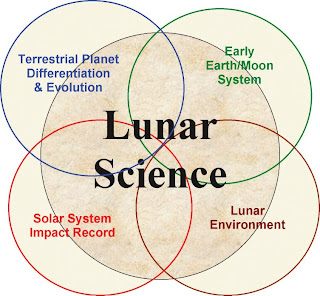The report was the outcome of a study that examined the value and scientific feasibility of a return to the Moon and associated robotic and human exploration activities. This study was directly related to the then (2007) White House and NASA goals under the Vision For Space Exploration (VSE). The VSE remained an active and ongoing program until its recommended cancellation by the Obama Administration. At this point in time (June 2010) the United States Congress is still debating the legality and feasibility of the cancellation of what is known as the Constellation Program.
There are other sections in this report as well as additional NAS reports that we will quote as well as provide links that will further substantiate both the scientific validity and urgency for a full-scale Moon research program. It is our opinion that the eventual establishment of a fully functional Moon Base will be the best way to accomplish all the scientific goals enumerated in the above report. Yes we will certainly venture forth throughout our solar system, but the information and science that we acquire on the Moon will better prepare us to fully evaluate our planetary neighbors and their histories. It will also allow us to develop, in close proximity to Earth, the practices and procedures that insure that we do so safely and successfully.
The diagram on the right is taken directly from the referenced report and clearly shows the interrelated scientific issues that a Lunar Research Program would address. To ignore this for the sake of some intermediary, Earthbound (Low Earth Orbits) program (other than the ongoing ISS program) is to further delay the essential investigations that our overall goals for deep space exploration demand.
In its Executive Summary, the report outlines eight key scientific concepts that should mandate a dedication exploration of the Moon. Those concepts are as follows:
"1. The bombardment history of the inner solar system is uniquely revealed on the Moon.
2. The structure and composition of the lunar interior provide fundamental information on the evolution of a differentiated planetary body.
3. Key planetary processes are manifested in the diversity of lunar crustal rocks.
4. The lunar poles are special environments that may bear witness to the volatile flux over the latter part of solar system history.
5. Lunar volcanism provides a window into the thermal and compositional evolution of the Moon.
6. The Moon is an accessible laboratory for studying the impact process on planetary scales.
7. The Moon is a natural laboratory for regolith processes and weathering on anhydrous airless bodies.
8. Processes involved with the atmosphere and dust environment of the Moon are accessible for scientific study while the environment remains in a pristine state."
What is so clearly obvious here is that a structured and sustained Lunar research program provides us vital information not just about our own planet and its satellite, but a great deal about the evolution of our entire solar system. This is sound and solid information that we should have and digest well before venturing forth blindly into deep regions of our solar system. Therefore, we should pause and reflect upon the manifold benefits of a full scale Moon exploration program, and quickly move to get our space sciences back on tract.
CREDITS:
Moon Image: Astrophotograph by Waddell Robey through telescopes of the Slooh,com network. (c)02/12/2009
Lunar Science Diagram: from the NAS report from the Committee On the Scientific Context for the Exploration of the Moon (2007) National Research Council.





The following is the conclusions drawn by the NAS/NRC study on constraints affecting the Constellation program. They are taken directly from the report entitled A CONSTRAINED SPACE EXPLORATION TECHNOLOGY PROGRAM. The entire report can be accessed here http://bit.ly/cPpMBj. The conclusion is as follows:"
ReplyDeleteAt the conclusion of its study, the committee had developed an appreciation of the enormity of the task faced by the NASA workforce engaged in the ETDP, especially in light of the significant constraints under which the
ETDP operates. These include the following:
• The constraints imposed by a limited budget relative to the exploration goals,
• The still-dynamic nature of the requirements handed over from the Constellation Program,
• The timescale laid out to meet the requirements of the VSE, and
• The desire within NASA to fully employ the NASA workforce at all of its centers.
In spite of these constraints, the committee was impressed with the intensity of the effort and with the dedication and enthusiasm that personnel showed for playing a part in contributing to the VSE. The committee was
particularly impressed with the degree to which cooperation between NASA’s field centers has developed and the
fact that all 10 NASA centers are engaged in the program.
The committee hopes that the observations, findings, and recommendations offered in this report will contribute to the ultimate success of the ETDP and to eventual success in a program to explore the solar system and
beyond.